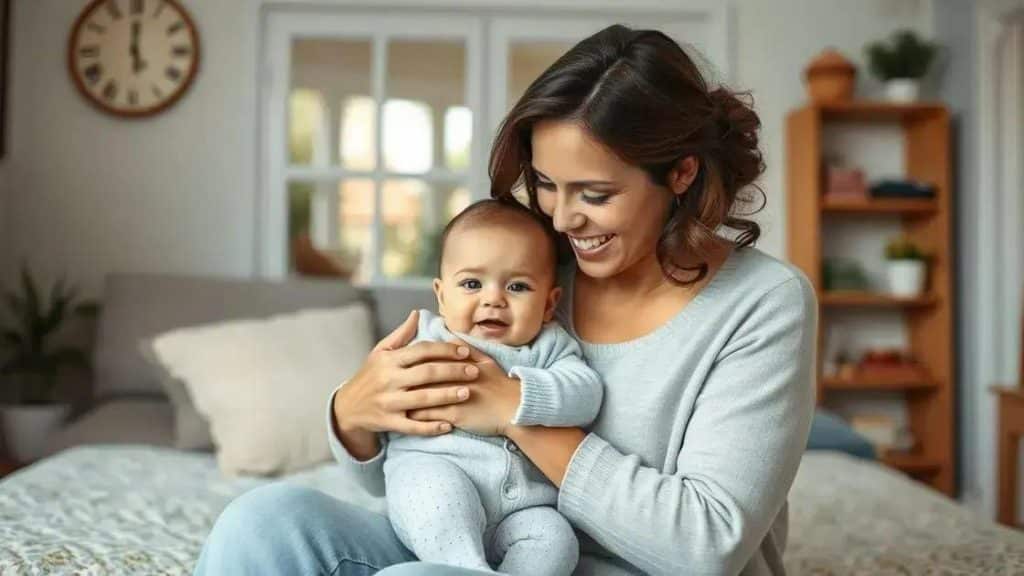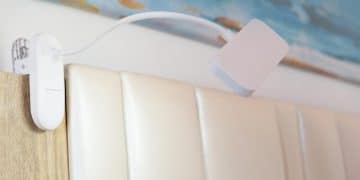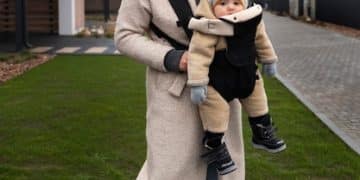Babyproofing checklist for new homes: what you need

Babyproofing a home involves securing areas with safety gates, outlet covers, and cabinet locks, ensuring a safe environment for children as they grow and explore.
If you’re a new parent, creating a safe space for your little one is crucial. A babyproofing checklist for new homes can guide you through this essential process to ensure safety and peace of mind as your baby explores their surroundings.
Understanding the importance of babyproofing
Understanding the importance of babyproofing your home is essential for every new parent. With little ones exploring their surroundings, it’s crucial to ensure they are safe from potential hazards. Let’s dive into why babyproofing is not just a precautionary measure, but a vital part of parenting.
Why babyproofing is necessary
Every corner of your home can pose risks for a young child. From sharp furniture edges to electrical outlets, being aware of these dangers is the first step toward maintaining a safe environment. Babyproofing extends beyond just installing gates and locks; it’s about creating an atmosphere where your child can explore freely without constant supervision.
Key benefits of babyproofing
- Reduces risks of injuries and accidents.
- Encourages independence as your child explores.
- Gives parents peace of mind.
- Promotes a safe environment for playtime.
When you take the time to babyproof, you support your child’s natural curiosity. This allows them to learn and grow while minimizing the risk of harm. Regularly assess your home for potential dangers, and remember that babyproofing is an ongoing process as your child grows and their capabilities change.
Creating a safe home
As you work on babyproofing, consider areas most frequented by your child. Securing heavy furniture to walls and using safety latches on cabinets are just a few steps to take. Additionally, adding corner guards can help protect from sharp edges and surfaces. Incorporating these features makes your home a safer space.
In conclusion, understanding the importance of babyproofing is the foundation of a safe home for your family. By taking proactive steps, you ensure that your child can explore their environment safely while giving you peace of mind.
Key areas to focus on in your home
When it comes to babyproofing your home, there are specific areas that require your attention. Understanding these key areas will help ensure your child’s safety as they grow and explore.
Living Room Safety
The living room is where your child may spend a lot of time. Ensure that all sharp corners and edges are covered with guards. Secure television stands and heavy furniture to walls to prevent tipping. Keep small items, like remotes and chargers, out of reach.
Kitchen Precautions
In the kitchen, safety is critical. Use childproof locks on cabinets that contain cleaning supplies or sharp objects. Store knives and breakable items on high shelves. Installing a stove guard can help prevent burns.
Bathroom Dangers
- Always supervise your child during bath time.
- Keep all medications and personal care products out of reach.
- Use non-slip mats in and around the tub for safety.
- Consider a toilet lock to prevent accidents.
Another area to keep in mind is the bedroom. Ensure that cribs are free from toys and soft bedding that could pose suffocation risks. You should also check for items within reach that could fall on your child.
Entryways and Stairs
Secure gates at the top and bottom of staircases to prevent falls. Check that your entryways are clear of clutter that could lead to tripping. As your child grows, teach them how to navigate stairs safely.
Remember, babyproofing is an ongoing process as your child’s abilities change. Regularly evaluate each room in your home to make adjustments as needed.
Essential babyproofing products to consider

Choosing the right babyproofing products can make a big difference in keeping your home safe. The market offers various items designed to prevent accidents and protect your little explorer.
Safety Gates
Safety gates are essential for blocking off stairs and areas that could pose hazards. Look for gates that are easy to operate but secure enough to withstand a child’s curiosity. They should fit snugly in the doorway and meet safety standards.
Corner and Edge Protectors
Sharp corners on furniture can be dangerous. Installing corner guards can help reduce the risk of injuries. These protectors are soft and can easily adhere to tables, shelves, and countertops, making spaces safer for children.
- Cushioned corner protectors for tables.
- Edge guards for furniture like shelves and couches.
- Easy-to-apply adhesive designs.
Another vital product is outlet covers. By covering electrical outlets, you can prevent your child from inserting objects into them, a common source of household accidents. There are various styles, including slide-on covers and safety plugs.
Cabinet Locks
Cabinet locks are required for any area where household chemicals or sharp objects are stored. Consider options that are easy for adults to use but impossible for children. Magnetic locks are a popular choice that is hidden from view.
In the bathroom, a non-slip mat can help prevent falls during bath time. Keeping all medications and cleaning supplies high out of reach is also a must. Use a lock on your toilet to avoid any serious accidents.
Using the right babyproofing products lays the groundwork for a safer home. Regularly reassess these items, as your child’s capabilities will change as they grow.
Tips for effective babyproofing
Effective babyproofing requires a thoughtful approach and consistent effort. Implementing practical tips can greatly enhance your child’s safety at home. Start by conducting a thorough walkthrough of your home to identify potential hazards.
Assess Your Home
Look at areas where your child spends most of their time. Focus on rooms like the living room, kitchen, and bathroom. Pay attention to the furniture layout and potential danger zones. It’s important to notice items that could easily be grabbed or pulled over.
Use the Right Tools
- Install safety gates at the top and bottom of stairs.
- Use cabinet and drawer locks to secure items.
- Apply corner guards on sharp furniture edges.
- Get outlet covers to prevent electrical injuries.
Keep in mind, your child’s age and mobility will change over time. What works for a crawling baby may not be safe for a toddler who is walking. Stay vigilant and update your safety measures regularly.
Teach Children About Safety
It’s also valuable to teach your children about safety as they grow. Explain what items are off-limits and why safety is important. This education can help them understand boundaries and develop safer habits.
Regularly check your home for new hazards. As your child explores, they may find new areas that need attention. Taking the time to reassess keeps your home the safest environment possible. Remember, babyproofing is not a one-time task; it’s an ongoing effort to ensure your child’s safety.
How to maintain a safe environment
Maintaining a safe environment for your child is an ongoing task that requires vigilance and regular updates to your babyproofing measures. Safety needs can change as your little one grows and learns new skills.
Regular Inspections
Conduct regular inspections of your home to identify potential hazards. Look for items that could pose risks, such as sharp edges or small objects that can be swallowed. Every few weeks, reevaluate areas where your child plays and sleeps.
Update Childproofing Measures
As your child begins to crawl, walk, and climb, update your babyproofing efforts accordingly. This may mean adding safety gates as they become mobile or reinstalling cabinet locks as they start reaching for objects. Remember, what worked last month might need an upgrade this month.
- Check the stability of furniture like bookshelves and tables.
- Ensure safety gates are securely fastened and functioning properly.
- Reassess which items are appropriate for your child’s age.
Engage your child in understanding safety by setting rules for certain areas of your home. Teach them about the importance of not going near stairs without an adult’s help or not touching dangerous tools. Children are often curious, so creating a clear understanding can promote safer behavior.
Encourage Safe Play
Keep play areas organized and clutter-free to minimize trip hazards. Encourage safe play by providing age-appropriate toys and supervising infants during playtime. This allows your child to explore safely while staying protected from hazards.
Lastly, being proactive rather than reactive is key. If you stay informed about safety recommendations and maintain a consistent babyproofing routine, you will create a secure environment where your child can grow and thrive.
FAQ – Common Questions About Babyproofing Your Home
What is babyproofing and why is it important?
Babyproofing involves making your home safe for your child by identifying and eliminating potential hazards. It’s important to prevent accidents and injuries as your child explores.
What are some essential babyproofing products?
Essential babyproofing products include safety gates, corner protectors, outlet covers, and cabinet locks. These tools help to secure your home effectively.
How often should I check my babyproofing measures?
You should regularly check your babyproofing measures, at least every few weeks, to ensure they are secure and effective as your child’s abilities change.
What are some tips for maintaining a safe environment?
To maintain a safe environment, regularly inspect your home for hazards, use the right babyproofing products, and teach your children about safety.





